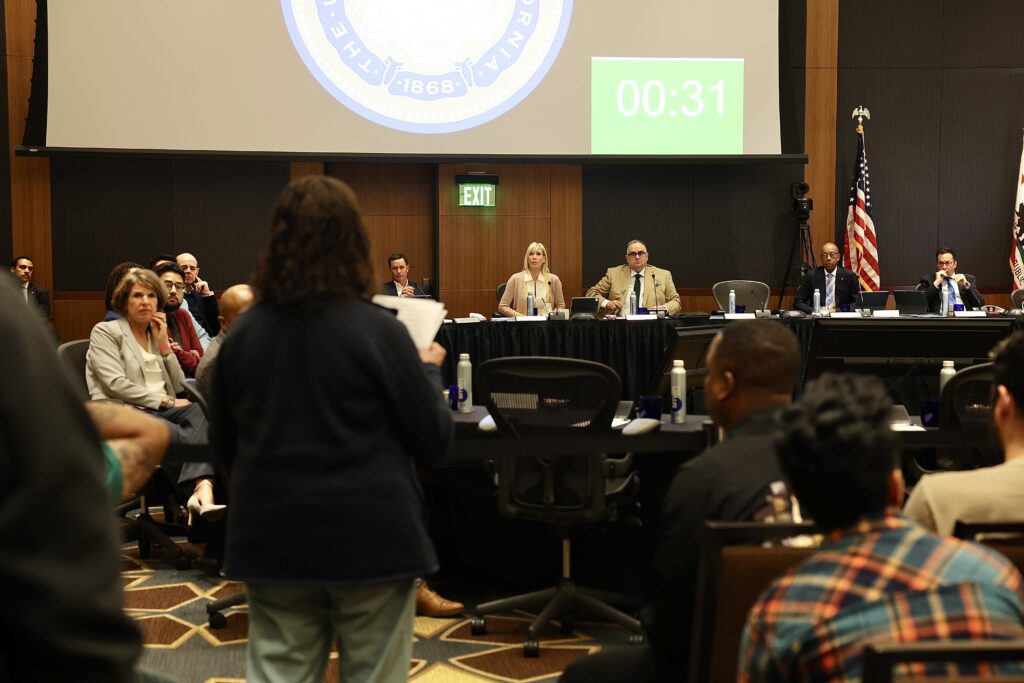
Assemblymember Phil Ting introduced a bill Wednesday to ban legacy admissions in California’s private colleges and universities.
A California assemblymember wants the state to join others in forcing private universities to stop legacy admissions.
The bill would prohibit the state’s private colleges and universities from receiving state funding through the Cal Grant program if they give preferential treatment to applicants with donor or alumni connections.
The bill makes California one of a handful of states considering curbing legacy admissions at both public and private colleges. Nationally, Sens. Todd Young, R-Ind., and Tim Kaine, D-Va., have also introduced legislation to ban public and private colleges from considering legacy connections in admissions decisions.
“Unfortunately, we saw last year that the Supreme Court disallowed the consideration of race in college admissions, but what they didn’t do was disallow the knowledge of income or class in college admissions,” said Assemblymember Phil Ting, D-San Francisco, who authored the bill, Assembly Bill 1780. “For the “1% of Americans, they have complete access, they have a back door, they have a side door, they have an express lane into our most elite institutions.”
Ting cited a study by Harvard University economists that found that children from families earning more than $611,000 a year are more than twice as likely to receive admission to a university when compared with low- and middle-income families with comparable standardized test scores.
Although the vast majority of private institutions in California say they don’t use donor or alumni connections to admit students, and none of the public institutions use legacy status for admission, six universities do, based on their admissions reports to the Legislature.
Stanford, the University of Southern California and Santa Clara University, in particular, all admitted more than 13% of their students based on connections to alumni and donors, based on their fall 2022 enrollment.
“This is a fairly limited practice within our sector,” said Kristen Soares, president of the Association of Independent California Colleges and Universities. “We have indicated to Assemblymember Ting’s office and others that we welcome the conversation and look forward to reviewing the details of the proposal once it is in print.”
Officials from Stanford and USC did not respond to requests for comment by the time of publication.
Sophie Callott, a senior at Stanford University, said her parents met as law students at the university, and so she’s a legacy student. Despite that, she’s in favor of ending the practice.
“I do not want my achievements to be overshadowed or questioned by the possibility that I only got into Stanford because my parents went there,” she said, during a news conference hosted by Ting on Wednesday about the bill. “People who go to schools like Stanford have an unparalleled advantage in the job market that allows them to disproportionately occupy high-paying leadership positions. If their children are further given a leg up in the admissions process, then this cycle of wealth and privileges continues.”
What is not known about legacy admissions?
The move to ban legacy admissions has taken off following the conservative-majority decision by the Supreme Court to effectively end race-conscious admission programs at colleges and universities. California law has banned the use of affirmative action in public institutions since 1996, and a recent effort to reverse that decision failed in 2020. The state’s private institutions did not have to follow California’s affirmative action ban, but in order to accept federal dollars, they did have to comply with the Supreme Court’s decision.
Alyssa Murray, a Stanford student and co-president of the Stanford Black Student Union, said during the news conference that legacy admissions is a form of racial preference and economic discrimination, and ending it would be one step toward creating true equity in higher education.
“For nearly a century, California private schools have predominantly admitted white students, creating an insurmountable racial imbalance,” she said. “That means legacy admissions will always favor white and wealthy applicants at the expense of low-income students of color who often do not have alumni relations.”
Ting attempted a similar bill in 2019 following Operation Varsity Blues, the national college admissions scandal that exposed a scheme through which the children of rich parents were able to get into top-tier schools using fake athletic credentials and bogus entrance exam scores. That bill ultimately failed and was opposed by the state’s private colleges because the system of legacy admissions was unrelated to the scandal and there were concerns that disallowing private schools that use legacy admissions from participating in the Cal Grant program would only hurt low-income students also attending those institutions.
Ting said the 2019 bill failed because Varsity Blues was too anecdotal and there wasn’t enough hard data, but now the numbers show where legacy admissions are prevalent. That data is now available because of a separate 2019 bill, AB 697, that Ting authored in the aftermath of the scandal, forcing private universities to send admissions and enrollment reports to the Legislature.
A June report by the Association of Independent California Colleges and Universities, which did not include data from Stanford or USC, found that only five of 70 private institutions allowed legacy admissions — Santa Clara, Pepperdine, Vanguard, Claremont McKenna and Harvey Mudd.
“It is a fact that legacy admissions perpetuates a cycle of privilege that fortifies inequity in higher education,” said Murray, co-president of the Stanford Black Student Union. “Legacy admissions perpetuates the racism of decades past when colleges and universities were closed to Latinx, Black, Asian American, Native Hawaiian, Pacific Islander, American Indian and Alaska Native people.”











